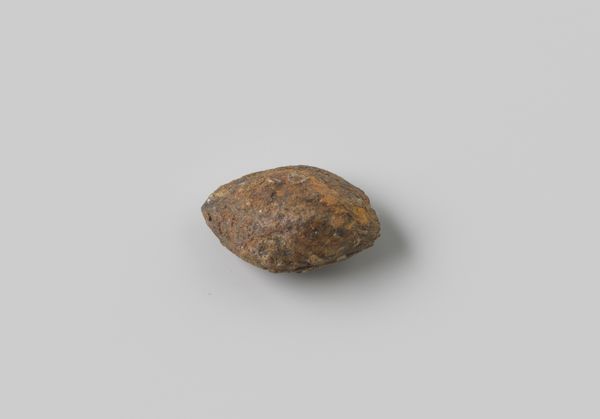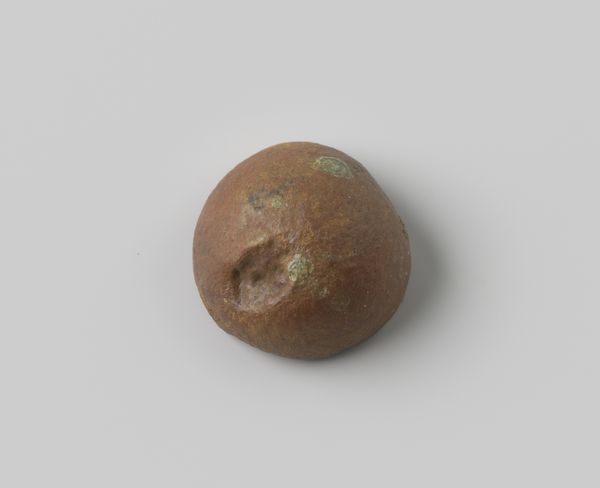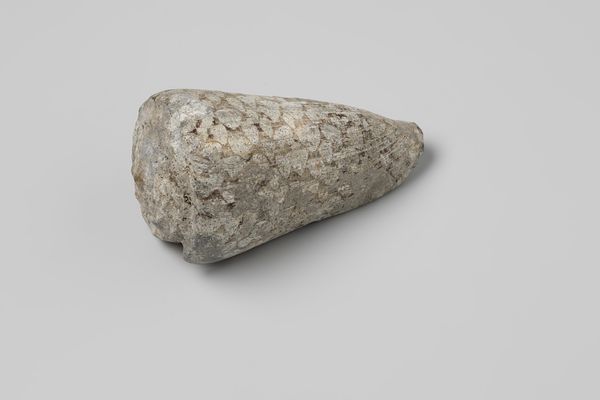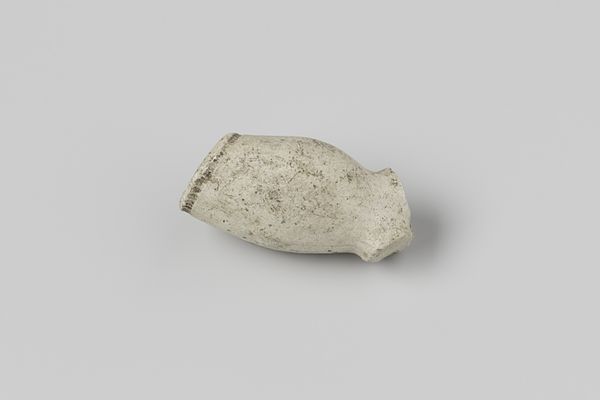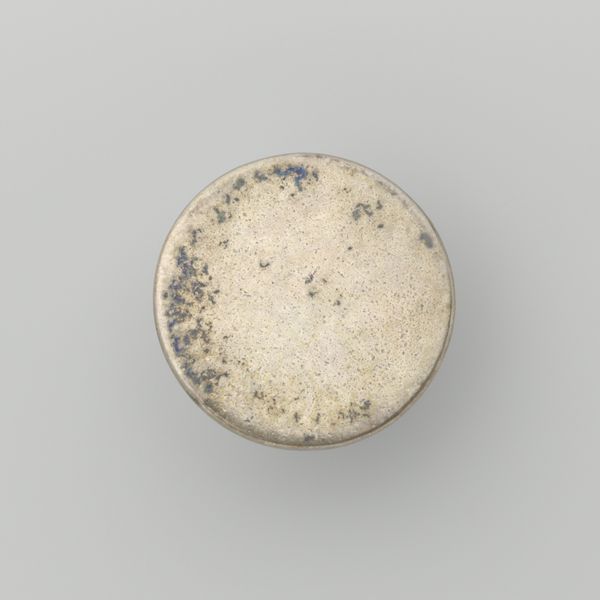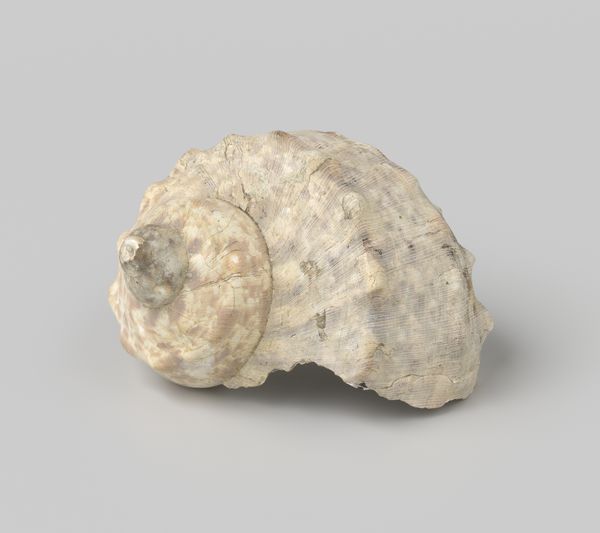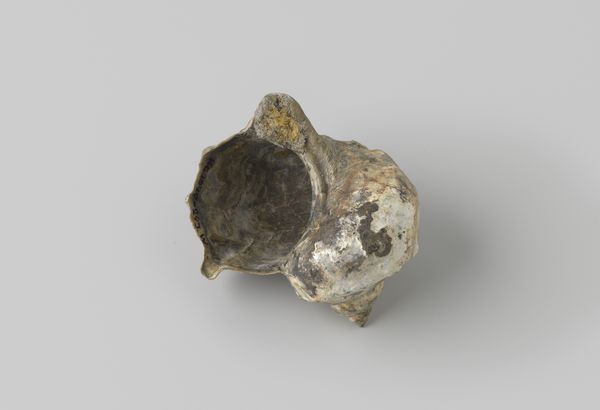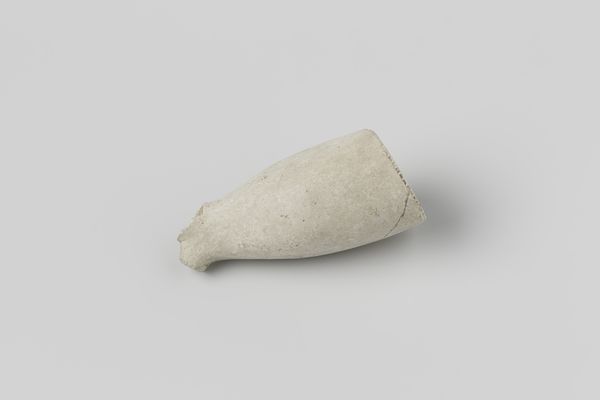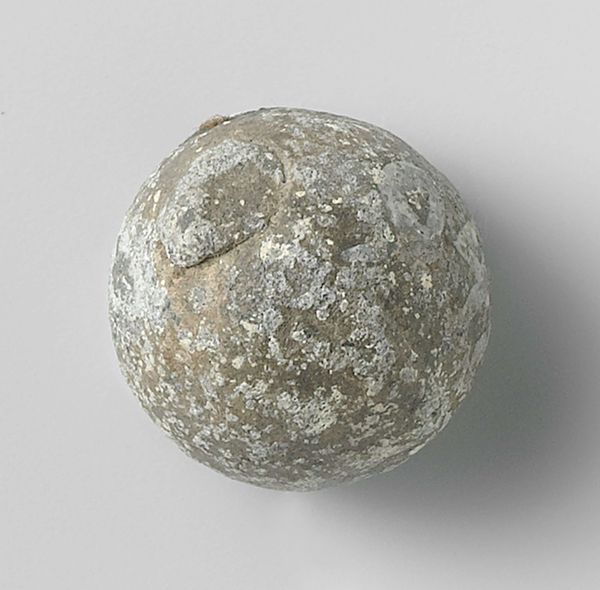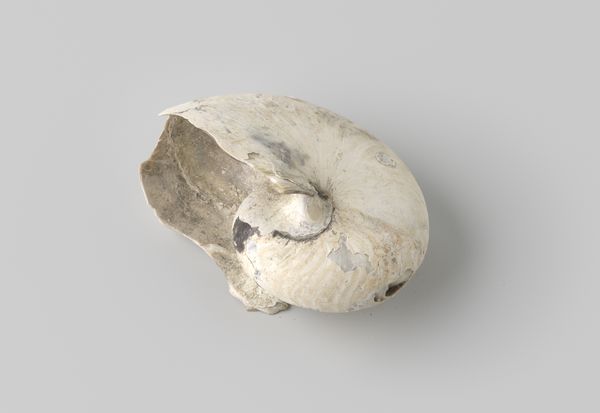
found-object, sculpture
#
found-object
#
sculpture
#
matter-painting
#
realism
Copyright: Rijks Museum: Open Domain
Curator: What an unassuming piece. "Bolvormige grijze steen"—that translates to "Spherical Grey Stone"—its creation spanning from approximately 1400 to 1950. We classify this as a found object sculpture here at the Rijksmuseum. Editor: Well, my immediate reaction is...simplicity itself. It’s just a rock. Beautiful in its unadorned nature, I must admit, but fundamentally, materially, just a stone. Curator: And what a loaded “just” that is. We might ask, who decided this particular stone, among millions of others, deserves this designation and our attention? How has its meaning shifted across its potential creation dates, against the backdrop of massive social and political upheavals? Editor: Precisely! I find myself wondering about the labor that went into selecting, perhaps shaping, and certainly transporting this stone. Was it extracted from a quarry? Discovered in a field? The implications for understanding its social context shift drastically. Curator: Absolutely. Consider, too, the subtle commentary on traditional sculpture it offers. The artist's selection challenges the notion of artistic skill and invites reflection on our relationship with the natural world, as a quiet statement about environmental responsibility and the overlooked beauty of the mundane. Editor: I appreciate that reading. Its display, then, becomes crucial. The gallery space, the lighting, even the plinth it rests upon transform a commonplace object into something demanding consideration, forcing a new kind of production of meaning, not just an encounter with matter. Curator: Right, which asks crucial questions. Who benefits from its enshrinement, and whose narratives are overshadowed? How might our reading of its muted grayness shift if we framed it within conversations around industrial pollution and environmental justice? Editor: Ultimately, it highlights the inherent tension between the raw physicality of the material and the elaborate, often invisible, network of human agency that transforms it into a cultural artifact. Curator: Exactly. So, what initially appears as just a gray stone ends up as a complex site of negotiation between nature, labor, value, and meaning. Editor: I agree. Thinking about it, it encourages me to look again at things I might otherwise overlook.
Comments
No comments
Be the first to comment and join the conversation on the ultimate creative platform.

